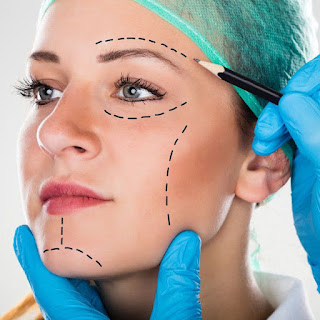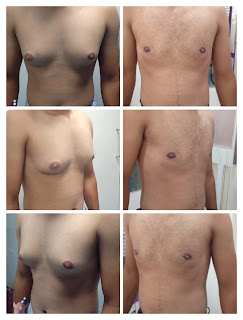Title: Understanding Gynecomastia: More Than Just "Man Boobs"
Introduction
In a society where physical appearance is scrutinized more than ever, conditions that deviate from social norms often carry significant emotional and psychological burdens. One such condition that is widely misunderstood and commonly stigmatized is gynecomastia. Often trivialized and dismissed as "man boobs," gynecomastia is a genuine medical condition that deserves informed discussion, not mockery. This blog post aims to dissect the reality behind gynecomastia, shedding light on its medical basis, causes, impact, and why seeking professional advice is essential.
What is Gynecomastia?
Gynecomastia refers to the benign enlargement of breast glandular tissue in males. It is distinct from pseudogynecomastia, which involves fat accumulation rather than glandular tissue. Understanding this distinction is crucial, as the treatment approaches differ significantly.
True Gynecomastia: This involves the proliferation of the glandular component of the breast tissue. It is usually symmetrical and may feel rubbery or firm upon palpation.
Pseudogynecomastia: Common in overweight or obese individuals, this condition results from excess adipose (fat) tissue in the chest area, without actual glandular proliferation.
Both conditions can present similarly on the surface, but their underlying causes and treatments are very different.
How Common is Gynecomastia?
Gynecomastia is more prevalent than commonly assumed. It can occur at various stages in life:
Neonatal Stage: Due to maternal estrogen, over half of newborn male infants experience temporary breast enlargement.
Puberty: Hormonal changes during adolescence can lead to gynecomastia in up to 70% of teenage boys. In most cases, it resolves spontaneously within 6 months to 2 years.
Adulthood and Older Age: As testosterone levels decline with age, and body fat tends to increase, gynecomastia becomes more common among older men.
Understanding its prevalence helps in normalizing the conversation around it and encourages affected individuals to seek medical guidance without shame.
Causes of Gynecomastia
The development of gynecomastia is usually linked to an imbalance between the hormones estrogen and testosterone. However, a variety of factors can disrupt this balance:
Hormonal Imbalances:
A decrease in testosterone or an increase in estrogen levels can trigger breast tissue development.
Conditions like hypogonadism, hyperthyroidism, or tumors (e.g., testicular or adrenal) can influence hormone levels.
Medications:
Drugs like spironolactone, anti-androgens, anabolic steroids, some anti-anxiety medications, and even certain antibiotics can induce gynecomastia.
Substance Use:
Alcohol, marijuana, amphetamines, heroin, and methadone have all been associated with gynecomastia.
Chronic Diseases:
Liver disease, kidney failure, and malnutrition can interfere with hormone metabolism and lead to breast tissue growth.
Lifestyle Factors:
Obesity leads to increased peripheral conversion of androgens to estrogen.
Poor diet, lack of exercise, and anabolic steroid abuse in gym-goers are increasingly recognized causes.
Each of these triggers can either act alone or in combination, making professional assessment critical.
Psychological and Emotional Impact
For many men, the psychological toll of gynecomastia far outweighs its physical implications. This is often under-recognized but deserves equal attention.
Self-Esteem Issues: Men with gynecomastia often feel embarrassed about their bodies. This can lead to social withdrawal, avoidance of situations that require baring the chest (like swimming), and a general lack of confidence.
Bullying and Social Stigma: Especially in younger individuals, being the target of teasing or bullying can have lasting psychological effects.
Body Dysmorphia: Some men may develop an obsession with their chest appearance, leading to unhealthy behaviors such as excessive exercising or extreme dieting.
Depression and Anxiety: There is a noted correlation between gynecomastia and mood disorders in adolescents and adults alike.
Addressing these psychological aspects is as important as treating the physical condition. A multi-disciplinary approach involving endocrinologists, plastic surgeons, and mental health professionals often yields the best results.
When to See a Doctor
Not all cases of breast enlargement in males require intervention. However, the following scenarios warrant a medical consultation:
Persistent or progressive breast enlargement
Pain or tenderness in the breast area
Nipple discharge (especially if bloody)
Recent onset in an older man
Concerns regarding appearance or emotional wellbeing
Early consultation helps rule out serious conditions like male breast cancer and provides a structured approach to diagnosis and treatment.
Diagnosis: Beyond the Physical Exam
A thorough evaluation typically includes:
Medical History and Physical Examination:
Duration, progression, medication history, drug use, family history
Laboratory Tests:
Hormonal assays (testosterone, estrogen, prolactin, LH, FSH, thyroid levels)
Liver and kidney function tests
Imaging:
Ultrasound or mammography to distinguish between gynecomastia and other breast lumps
Referral:
Endocrinology for hormonal issues
Surgery consultation when treatment is being considered
This systematic evaluation ensures that the treatment addresses the root cause, not just the symptoms.
Treatment Options
Management depends on the cause, duration, and severity of the condition.
Watchful Waiting:
Many adolescent cases resolve within 1–2 years without any intervention.
Medical Management:
Hormonal therapy (e.g., tamoxifen, an estrogen receptor modulator) may be prescribed in select cases.
Treating the underlying cause (e.g., stopping offending medications or managing endocrine disorders).
Surgical Treatment:
Liposuction: Effective for pseudogynecomastia or in combination with glandular excision.
Gland Excision Surgery: Standard treatment for true gynecomastia with fibrous tissue.
Skin Tightening Procedures: For large-volume gynecomastia with skin excess.
Cosmetic surgery is often sought by those severely affected emotionally or socially. The results can be life-changing, significantly improving confidence and quality of life.
Debunking Common Myths
"Only fat men get gynecomastia": False. Lean individuals with hormonal imbalances can also develop it.
"It’s just fat; exercise will fix it": Not necessarily. Glandular tissue doesn’t respond to diet or exercise.
"Gynecomastia is harmless, so it doesn't matter": It may be benign, but its psychological and emotional burden is real.
"All cases need surgery": Not true. Many resolve on their own or with medical therapy.
The Importance of Empathy and Awareness
Gynecomastia should not be a source of shame or ridicule. It is a common, treatable medical condition. Raising awareness helps eliminate the stigma and encourages affected individuals to seek help.
As medical professionals, family members, and peers, it is important to foster an environment of understanding and support. Whether you are a parent noticing changes in your son, a partner concerned for your loved one, or someone struggling silently — know that help is available.
Conclusion
Gynecomastia is far more than an aesthetic issue. It is a multifactorial condition with physical, hormonal, and deeply psychological implications. Recognizing it for what it truly is — a medical condition, not a joke — is the first step toward meaningful change.
If you or someone you know is struggling with gynecomastia, don’t delay consulting a qualified professional. Early diagnosis, proper guidance, and where necessary, timely treatment can significantly improve physical comfort and emotional wellbeing.
Remember: Real strength lies in awareness, acceptance, and action.
Disclaimer: This blog post is intended for informational purposes only and does not constitute medical advice. Results may vary from person to person. Always consult with a qualified and experienced plastic surgeon like Dr. Pawan Shahane for any health concerns or before making any decisions related to medical procedures.




Comments
Post a Comment